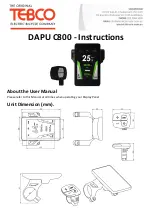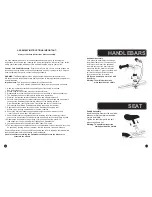
16
Wet Weather
- Ride more cautiously in wet weather.
Avoid sudden braking, slow overall riding pace
and approach corners more carefully.
- Brake sooner, stopping distance increases
in wet conditions.
- Remember pot holes and slippery surfaces
such as line markings and tram tracks all
become more hazardous in the wet.
Try to avoid where possible.
- Cornering traction will also be reduced in wet
weather.
Night Riding
- Wear reflective and light coloured clothing.
- Reflectors should be fitted correctly to the
bicycle and clearly visible. (Refer to Part 5
of this manual.)
Riding in the dark should never be
undertaken without fully operational
front and rear bicycle lights. The use
of bicycle lights is mandatory for night
riding in most Australian States.
- Attach a fully operational lighting set.
Lights should have a white front lamp
and a red rear lamp.
- Use a flashing rear light to improve visibility.
- Charge batteries if battery powered lights
are to be used. Check wiring connections
for dynamo powered lights.
- Avoid riding at night if possible. If not, slow
down and opt for familiar roads with street
lighting when able.
Pedalling Technique
- Place the ball of your foot on the centre
of the pedal.
- Ensure your knees are parallel to the bicycle
frame when pedalling.
- Keep your elbows slightly bent. This will help
to absorb shock.
- Learn how to use the gears correctly (Refer
to Pages 18-21 in this part of the manual).
APOM0312
Apollo Bicycle Company Pty. Ltd. ABN: 60 001 914 469
















































